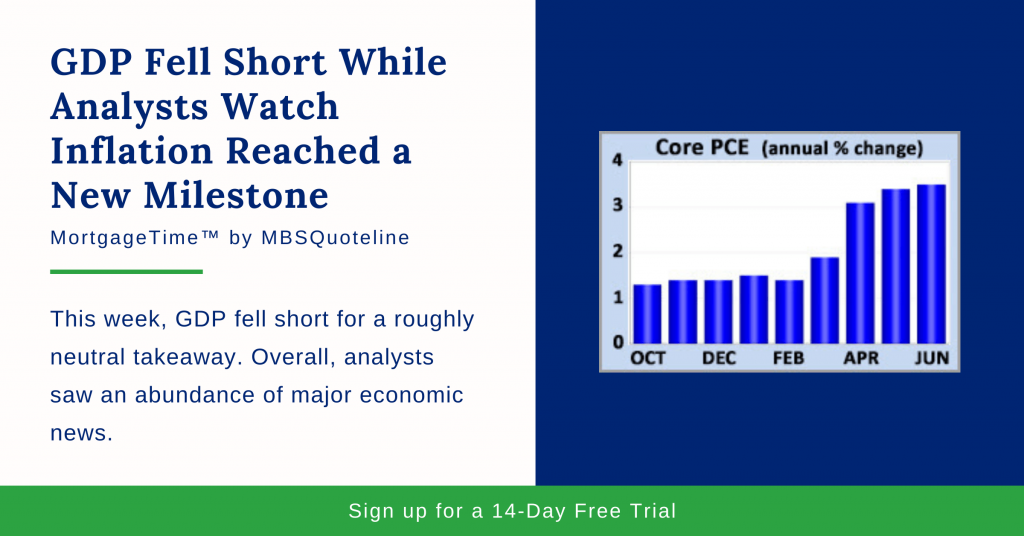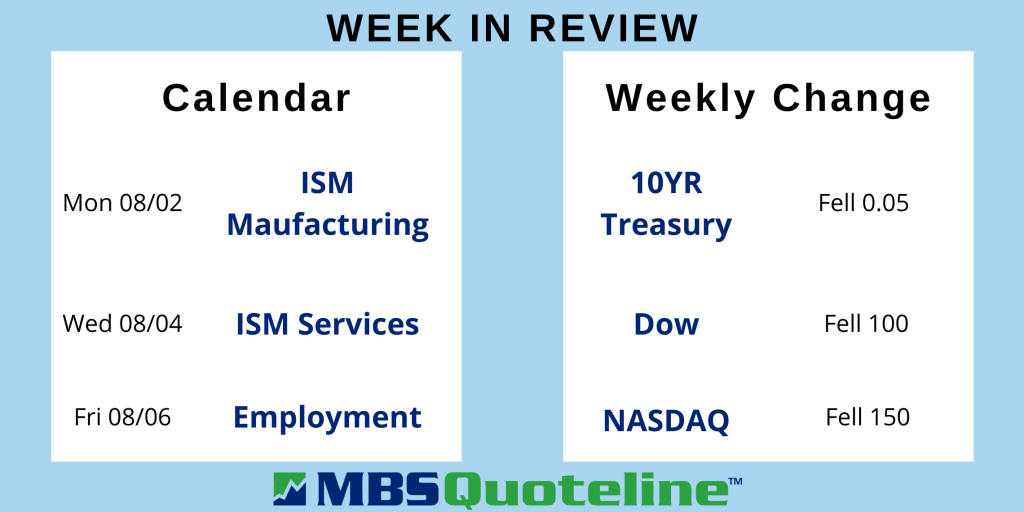This week, GDP fell short for a roughly neutral takeaway. Overall, analysts saw an abundance of major economic news. While the Fed meeting produced no surprises, inflation reach a new milestone. Thus, mortgage rates ended the week a little lower.
GDP Fell Short
Gross domestic product (GDP) represents the broadest measure of economic activity. The headline number for second quarter GDP, showed annualized growth of just 6.5%. Therefore, GDP fell short of the 8.5% consensus forecast.
However, the details of the report provided clarity on the shortfall. Much of the shortfall revolved around areas which simply postponed growth until future quarters.
For example, supply shortages caused delays in the production of cars, homes, and many other items. As a result, inventory drawdowns subtracted roughly 1.2% during the quarter. Eventually, the economy plans on replacing these inventories. As this occurs, it will realize future economic activity.
Underlying demand remained very strong. Personal consumption expenditures surged 11.8%. With the second quarter growth, the size of the economy grew larger than it was before the pandemic. Early estimates for third quarter GDP growth reflect an even stronger 7.0% annualized rate.
Inflation Reached a New Milestone As GDP Fell Short
The Fed favors the core PCE price index as its go-to inflation indicator. In June 2021, core PCE rose 3.5% higher than a year ago. Ultimately, the rise fell a little below the consensus forecast. Having said that, core PCE increased from an annual rate of increase of 3.4% last month. More so, February 2021 only had an annual rate of increase of just 1.5%.
Subsequently, inflation core PCE reached its highest annual rate in decades. Economists expected readings of this magnitude during the economic reopening. However, economists differ on whether the higher inflation is temporary or set for the long-term.
Fed Revealed Little New Information
On Wednesday, the Fed provided very little new information in spite of GDP falling short of expectations. Since March 2020, the Fed bought $120 billion of mortgage-backed securities (MBS) and Treasuries. They did this to offset negative economic effects created by the coronavirus pandemic.
This year, Fed officials repeatedly said that they will not begin to scale back (taper) these purchases until the economy achieves “substantial further progress” toward reaching their labor market and inflation targets. Investors constantly seek more concrete information about the projected timeline. Yet, officials again provided no precise guidance.
The post-meeting statement simply said that the economy “has made progress” toward their goals this year. Increased federal demand for MBS pushed mortgage rates to record-lows. Nevertheless, investors closely monitor the bond buying program’s future outlook.
Looking Ahead After GDP Fell Short
Looking ahead, investors will watch global COVID-19 case counts. Investors also will look for hints from Fed officials about the timing for changes in monetary policy.
Next week, the ISM national manufacturing index comes out on Monday. Additionally, the ISM national services index releases on Wednesday.
Beyond that, the monthly Employment report releases on Friday. These figures contain data on the number of jobs, the unemployment rate, and wage inflation. Analysts view the Employment report as the most highly anticipated economic data of the month.
Want to see how GDP falling short impacts mortgage-backed securities? Never miss an update with MBSQuoteline. To receive by-the-minute updates on mortgage-backed securities, try our platform free for 14 days.
Stay connected with MBSQuoteline on social media by following us on Facebook, Twitter, and LinkedIn.
All material Copyright © Ress No. 1, LTD (DBA MBSQuoteline) and may not be reproduced without permission. To learn more about the MortgageTime™ newsletter, please contact MBSQuoteline at 800.627.1077 or info@mbsquoteline.com.



